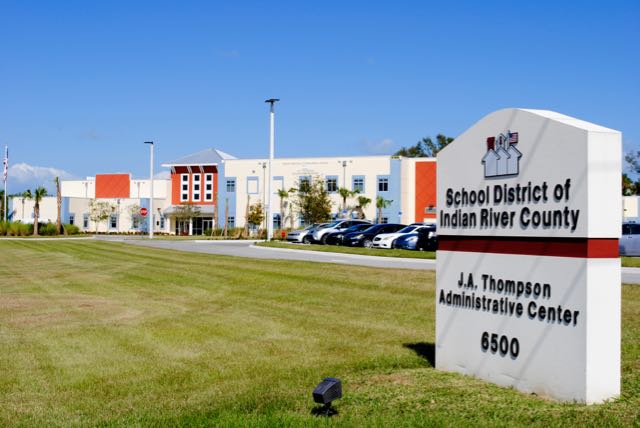
In the first few days since classes resumed after the Christmas break, COVID-19 was spreading among school personnel at a far faster rate than during the fall half of the school year, according to Superintendent David Moore.
“This variant is spreading much faster than the spikes we’ve seen in the past,” Moore said Sunday.
But while the now-raging Omicron variant has proven itself more transmissible than the Delta variant, which became the dominant strain last summer, the latest version of COVID has generally produced milder symptoms that don’t last as long and aren’t nearly as deadly.
Thus, Moore said, Omicron’s impact on the county’s public schools thus far hasn’t been as devastating.
During the four-month stretch between the first day of classes in August through the start of the Christmas break in December, 221 school district employees tested positive for COVID-19.
Among those infected were teachers, administrators, bus drivers, cafeteria workers and district-office personnel.
As the first week of post-Christmas classes ended Friday – after only three days back in school – 65 district employees were staying home because they had tested positive for virus.
“In terms of being able to handle it, 65 isn’t a bad number,” Moore said. “But if we continue at that rate, we’re going to hit 221 by the end of next week. That would cause problems.” As of Monday, the number was up to 73.
“None of this is easy, because just when you thought we were getting closer to some sense of normalcy, we get another spike and it’s: Here we go again …,” Moore said. “But to this point, anyway, what we’re seeing isn’t as bad as during the Delta spike.
“The fear of getting really sick isn’t what it was,” he added. “That makes things easier.”
Moore said some district employees have continued to test positive for COVID as many as eight days after first experiencing symptoms, but others who’ve become infected recently have missed less than five school days.
“If someone tests positive, you’re definitely going to lose them for five days from the onset of symptoms, because they need to quarantine,” Moore said. “Sometimes, though, a couple of those days are on weekends and we don’t need to replace them.
“The state allows them to come back after five days with a negative test result,” he added. “That helps, especially with teachers, but we don’t know when they’re going to test negative.
It varies from case to case.”
Moore said he’s deploying staffers from the district offices to serve as substitutes for teachers forced to miss work because of COVID – a strategy based on each school’s enrollment and number of teachers absent.
To make the plan effective, the school district’s 1,200 teachers have been asked to notify their principals immediately if they test positive, so the necessary arrangements can be made.
“Even if they test positive over the weekend, they need to let us know right away, so the principal isn’t walking in blind on Monday morning,” Moore said. “But as much as you prepare and have contingencies in place, things can happen.
“You can have everything covered Monday evening, then find out Tuesday morning that two more teachers tested positive and you’ve got to adjust again,” he added.
Moore said 110 district-office staffers are qualified to serve as substitutes. Many of them are former teachers; others are non-educators who’ve been given the in-house training needed to fill in.
The staffers’ specialties include curriculums, professional development, special needs education, human resources, finance and information technology. Most times, their services are needed for only two or three days.
“Services at the district office might slow down a bit as we go through this spike,” Moore said. “Fortunately, we’ve got a very capable clerical staff holding down the fort.”
The district does not require employees to be tested to come to work.
An executive order issued by Gov. Ron DeSantis last year made it illegal for school districts in Florida to impose mask mandates on students, but Moore said all school employees are required to wear face coverings when indoors on campus and social distancing isn’t possible – at least for this week.
Moore ordered the employees-only mandate after discussions with the teachers and support-staff unions during the Christmas break.
“I don’t think anybody’s loving it, but they understand the rationale,” Moore said. “We’ll do it until the end of the week, then see where we are and decide what we need to do next.
“We want to stay ahead of this spike,” he added. “If we don’t, we could find ourselves in real trouble.”
The number of students wearing masks on campus was “extremely low,” Moore said – about 5 percent at local high schools and increasing through the middle schools to 30 percent to 35 percent at the elementary schools.
Moore said he meets with his cabinet at the start of each work day and again at about 5 p.m. to analyze the latest COVID data, look for outbreaks at individual schools and assess the district’s strategies. They also talk on Saturdays and especially Sundays, when principals call with the latest teacher absences.
Although Moore said he hadn’t seen any breakouts, he’s closely monitoring student attendance, which last week ranged from 78 percent to 90 percent.
“Typical attendance is roughly 92 percent, so those student absences are a concern,” Moore said. “Over the long term, they can have a tremendous impact on the continuity of instruction, particularly at this point in the school year.
“Unlike at the beginning of the year, teachers move faster after the holiday break,” he added.
“The longer this goes on – with attendance in the 70s – the bigger the problem becomes, because teachers have to slow down.”
Moore said he didn’t know how many of the student absences could be attributed to parents keeping their children home because of COVID fears.



